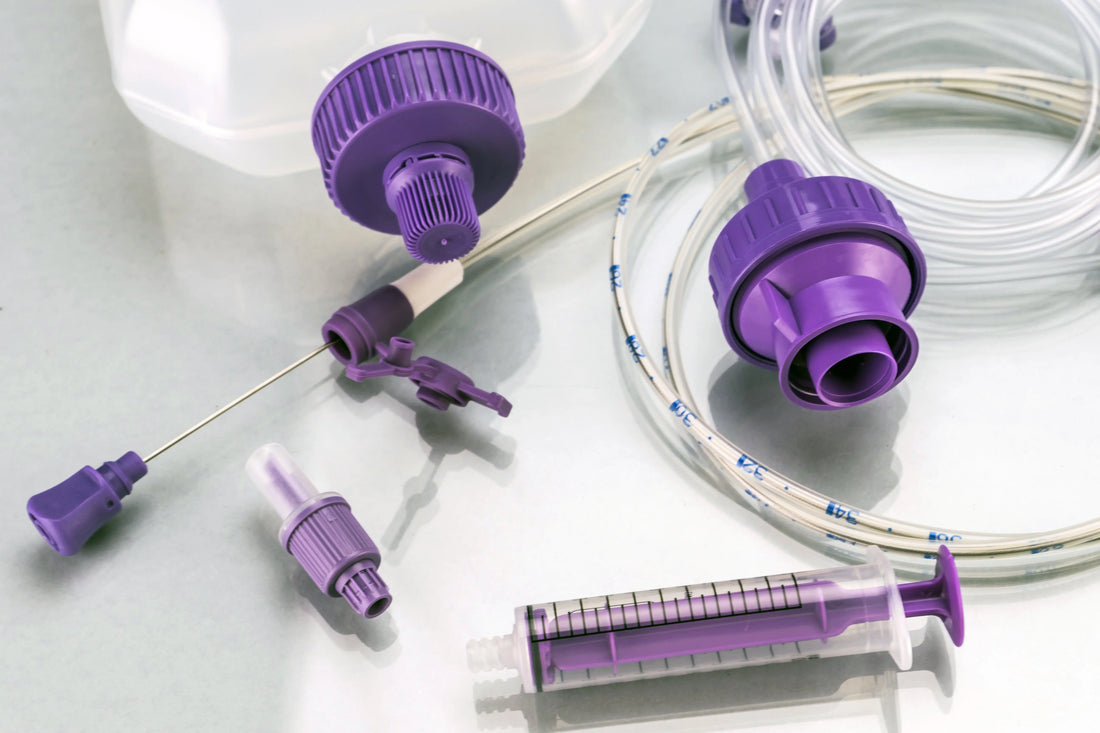
Tube Feeding and Bowel Health: Managing Constipation and Diarrhoea
Share
This post first appeared in the US and was written by April Jackson, we have added and expanded it.
Preventing and Treating Common Digestive Issues for Tube-Fed Individuals
By April Jackson, MS, RD, LDN, CNSC – Updated & Expanded by Food Untethered Team
Talking about bowel habits isn’t always easy—but when it comes to tube feeding, bowel health is central to overall wellbeing. Whether you're caring for a child or an adult with a feeding tube, constipation and diarrhoea are two of the most commonly reported challenges.
Understanding the impact of nutrition on gut function is critical. As many families have learned, the quality of the food delivered through the tube matters enormously, and a real food approach—like a blended diet—can make a dramatic difference.
What Is Constipation?
Constipation is generally defined as:
- Fewer than three bowel movements per week
- Straining, pain, or difficulty passing stool
- Hard, dry stools
- Sensations of incomplete evacuation
If constipation persists for more than three days or causes significant discomfort, it's important to address it with your healthcare team.
Why Does Constipation Happen in Tube Feeding?
Several factors common in traditional tube feeding can lead to constipation:
1. Highly Processed Formulas
Many commercial tube feeding formulas are heavily processed, often lacking the variety, fibre, and nutrients found in real food. According to research from the Journal of Parenteral and Enteral Nutrition (2023), the monotonous and synthetic nature of many formulas can disrupt gut motility and microbiome diversity, contributing to constipation.
2. Low Fibre Intake
Fibre is critical for healthy bowel function. Many standard formulas are either low in fibre or contain synthetic fibres (like soy fibre or cellulose), which may not behave like natural fibres in the gut. A 2022 study from the International Dysphagia Diet Standardisation Initiative (IDDSI) highlighted that naturally occurring fibres from fruits and vegetables are far more effective in promoting regular bowel habits than isolated fibres added to formulas.
3. Dehydration
Adequate hydration is essential. Without enough fluid, stools become hard and difficult to pass. Tube-fed individuals often require extra water flushes between meals, especially when consuming fibre-rich blends.
4. Reduced Mobility
Limited physical activity slows the movement of stool through the colon, increasing water absorption and leading to harder stools. Encouraging any level of movement can help—even simple stretching or wheelchair-based exercises.
5. Medication Effects
Common medications (anticonvulsants, opioids, iron supplements) can slow gut motility or contribute to dehydration. Formula-fed individuals often receive synthetic iron and zinc, which can exacerbate constipation.
Diarrhoea and the Blended Diet
While constipation is common, diarrhoea can also occur, particularly during a transition to a new feeding regimen.
According to recent insights from the blended diet community (e.g., Real Food Blends, *Compleat®, and newer publications like Blenderized Tube Feeding: A Practical Guide), causes of diarrhoea include:
- Too rapid a transition from formula to blended meals
- Incorrect blend consistency (too watery or high osmolality)
- Intolerances to specific ingredients
- Poorly balanced blends lacking soluble fibre, which helps regulate bowel movements
The good news? Most cases of diarrhoea resolve with time as the gut adjusts to real foods. Blended diets rich in both soluble and insoluble fibre from fruits, vegetables, and whole grains help normalise bowel movements over time.
How a Blended Diet Supports Healthy Bowel Movements
1. Real Food, Real Fibre
Blended diets naturally incorporate a variety of fibres that:
- Add bulk (insoluble fibre)
- Absorb water and slow digestion (soluble fibre)
- Support the gut microbiome
Clinical reviews, such as the Nutrition in Clinical Practice (2021), support the idea that natural food fibres are superior for both preventing constipation and managing diarrhoea compared to processed fibres.
2. Reduced GI Symptoms
Studies and anecdotal reports consistently show that transitioning to real food diets reduces symptoms like reflux, bloating, constipation, and diarrhoea. (Cited from the Blenderized Tube Feeding: A Practical Guide, 2021)
3. Better Hydration Opportunities
Blended meals are often naturally higher in water content compared to dry formulas, supporting hydration. Still, additional water flushes are crucial, especially during hot weather or high activity periods.
Practical Steps to Manage Bowel Health with Tube Feeding
Think Food First:
- Include a wide variety of fruits, vegetables, and whole grains.
-
Target the recommended daily fibre intake:
➔ 25g/day for women, 38g/day for men (or about 14g per 1000 kcal).
Stay Hydrated:
- Water is the gold standard, but prune, cherry, apple, or pear juice can be helpful thanks to their natural sorbitol content.
- Use extra flushes around meals as advised by your care team.
Move More:
- Gentle movement can help stimulate bowel motility.
- Work with physical therapists to find appropriate activities if mobility is limited.
Add Probiotics:
- Yogurt, kefir, or probiotic supplements can support gut flora balance, aiding both constipation and diarrhoea control.
Transition Gently:
-
If moving from formula to a blended diet, transition slowly over 1–2 weeks to allow the gut to adapt.
Food Untethered Meals: A Convenient, Gut-Friendly Solution
Food Untethered meals are designed with gut health in mind:
✅ 100% organic, real food ingredients
✅ Natural fibre from whole foods, no synthetic additives
✅ Shelf-stable, easy to store and transport
✅ Clearly labelled nutritional’s and allergens—perfect for travel and reassuring to healthcare teams worldwide
✅ Consistent textures optimized for tube feeding, reducing risk of blockages or intolerance
Families report fewer GI symptoms when incorporating Food Untethered meals into their routines—supporting not only better bowel habits but overall vitality and well-being.
Final Thoughts
Managing bowel health in tube feeding is about nourishing the body with real food—supporting digestion naturally, reducing reliance on medications, and empowering a better quality of life.
By choosing a blended diet rich in whole foods, fibre, and hydration—and by taking practical steps—you can help ensure that constipation and diarrhoea are rare, manageable issues, not daily struggles.
Food Untethered is here to make that journey a little easier.
